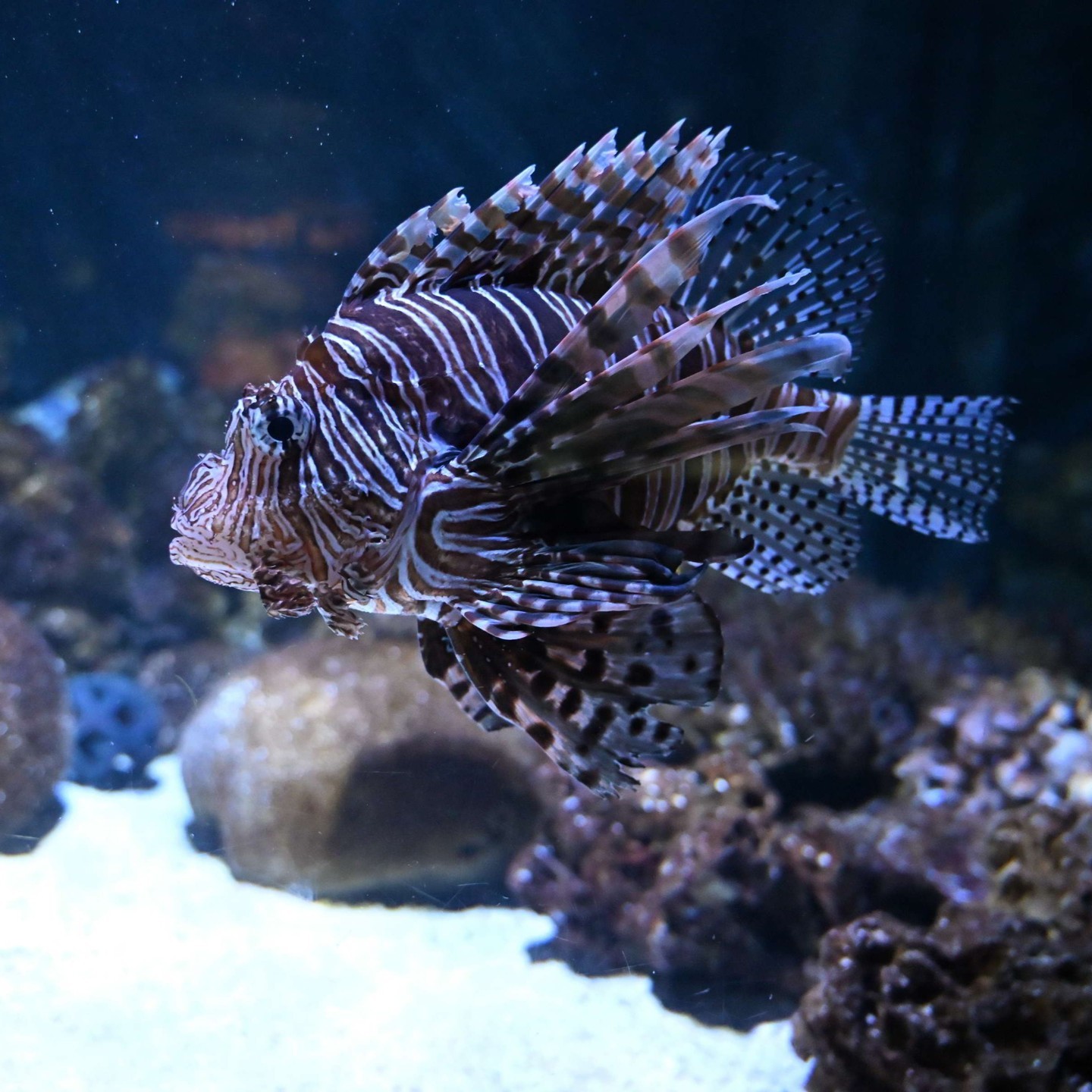– **The Striking Invader**: A look into the red lionfish, an arresting yet unwelcome guest in foreign waters.
– **Ecological Impact**: Understanding how red lionfish are endangering local marine life outside their native habitat.
– **Conservation Efforts**: The strategies and actions being taken by communities and organizations to reduce the impact of invasive lionfish.
– **Culinary Approach**: How turning predators into plates is part of the inventive solutions to the lionfish problem.
– **Get Involved**: Ways enthusiasts and concerned citizens can participate in managing this marine crisis.
The red lionfish is a strikingly beautiful species that has become controversial due to its invasive nature. It is native to the Indo-Pacific region but has spread beyond its home range, resulting in a significant ecological imbalance.
The red lionfish’s striking appearance is a result of its banded red and white stripes, which serve as a warning to potential predators of its venomous spines that line its dorsal, pelvic, and anal fins. Despite its potent defense mechanism, the red lionfish has found its way into waters where it was previously unknown, sparking a debate on how it managed to enter the Western Atlantic and the Caribbean.
The presence of red lionfish in the Caribbean and the Western Atlantic has resulted in a decline in the populations of native fish, particularly smaller and juvenile species that play a key role in the ecological balance of the reefs. This decline has far-reaching consequences, affecting the marine food web, the livelihoods of local fishermen, and economies that depend on fishing and healthy reef ecosystems for tourism.
Numerous parties have risen to the challenge of controlling and curbing the red lionfish population. Conservation groups have partnered with local governments to develop programs and initiatives, including lionfish derbies and control plans incorporating safe handling and disposal guides. These programs have physically reduced the number of predators on the reefs, fostered community involvement, and raised awareness of the issue.
One innovative solution that has emerged to tackle the red lionfish problem is to eat them. Red lionfish meat is safe to consume once the venomous spines are removed. It is now being incorporated into restaurant menus, creating a demand that can increase fishing pressures on the population, turning a problem into a palatable resource.
Interested individuals can participate in this ecological endeavor by participating in lionfish derbies and removal efforts, attending workshops and seminars to become lionfish cullers, supporting restaurants featuring lionfish on their menus, spreading the word on social media, and joining conservation groups. Citizen scientists can contribute to ongoing studies by reporting sightings and population data, which is vital in forming a picture of the spread and density of the red lionfish and informing the strategies deployed to control it.
While the red lionfish is a menace to the reef communities it has invaded, its native populations face the challenges of maintaining a delicate balance in the food web, subdued by predators, disease, and competition. Understanding the complex nature of the red lionfish’s impact is key to addressing this issue and preserving the ecological balance of our oceans.
*****
Source Description
Red lionfish are mainly native to the Indo-Pacific but have become invasive in the Caribbean and Western Atlantic. As predatory fish, they have caused a decline in fish populations within their invasive range. Still, efforts are underway by local governments and conservation groups to help lessen the impact of the invasive red lionfish.

